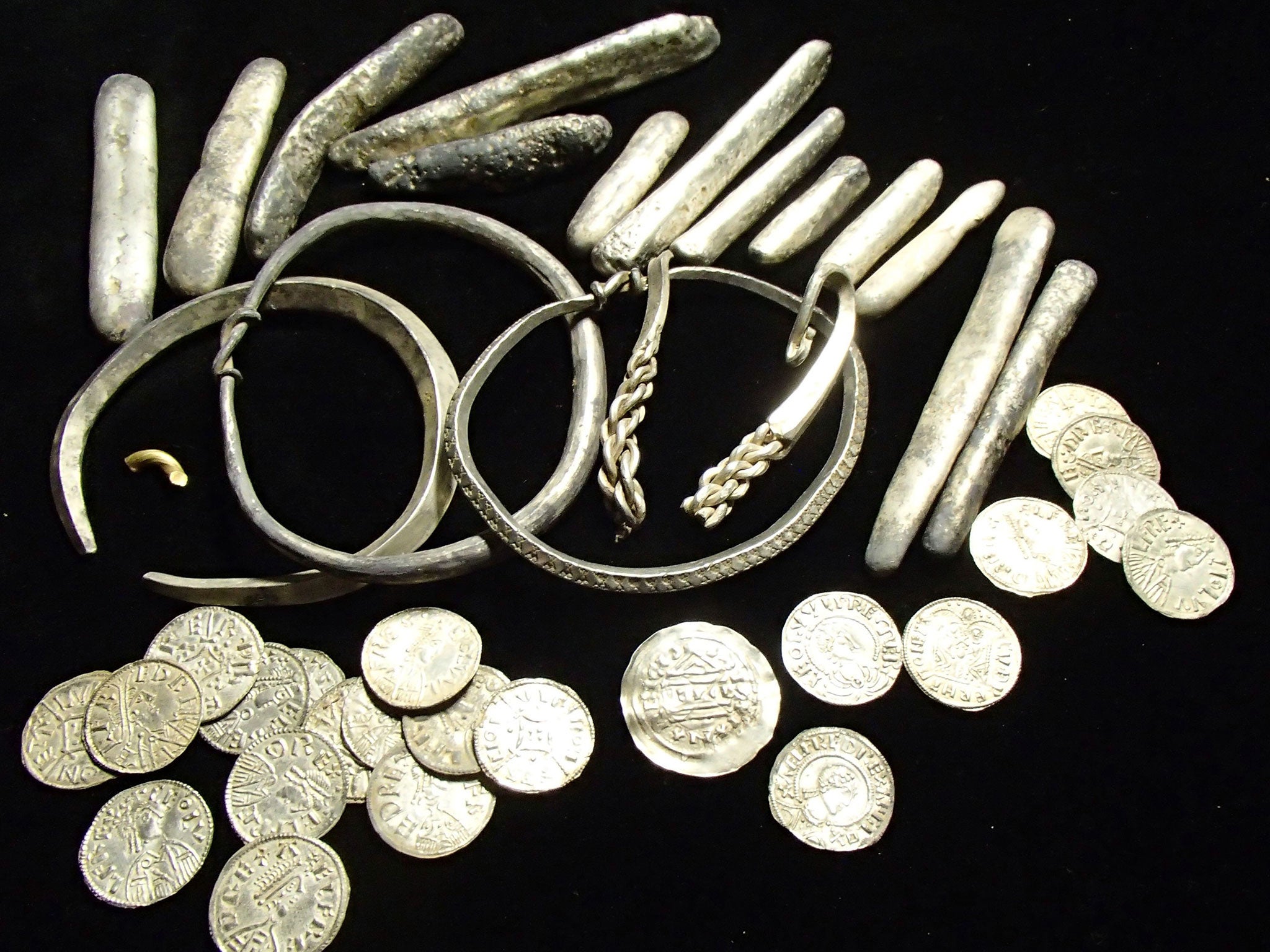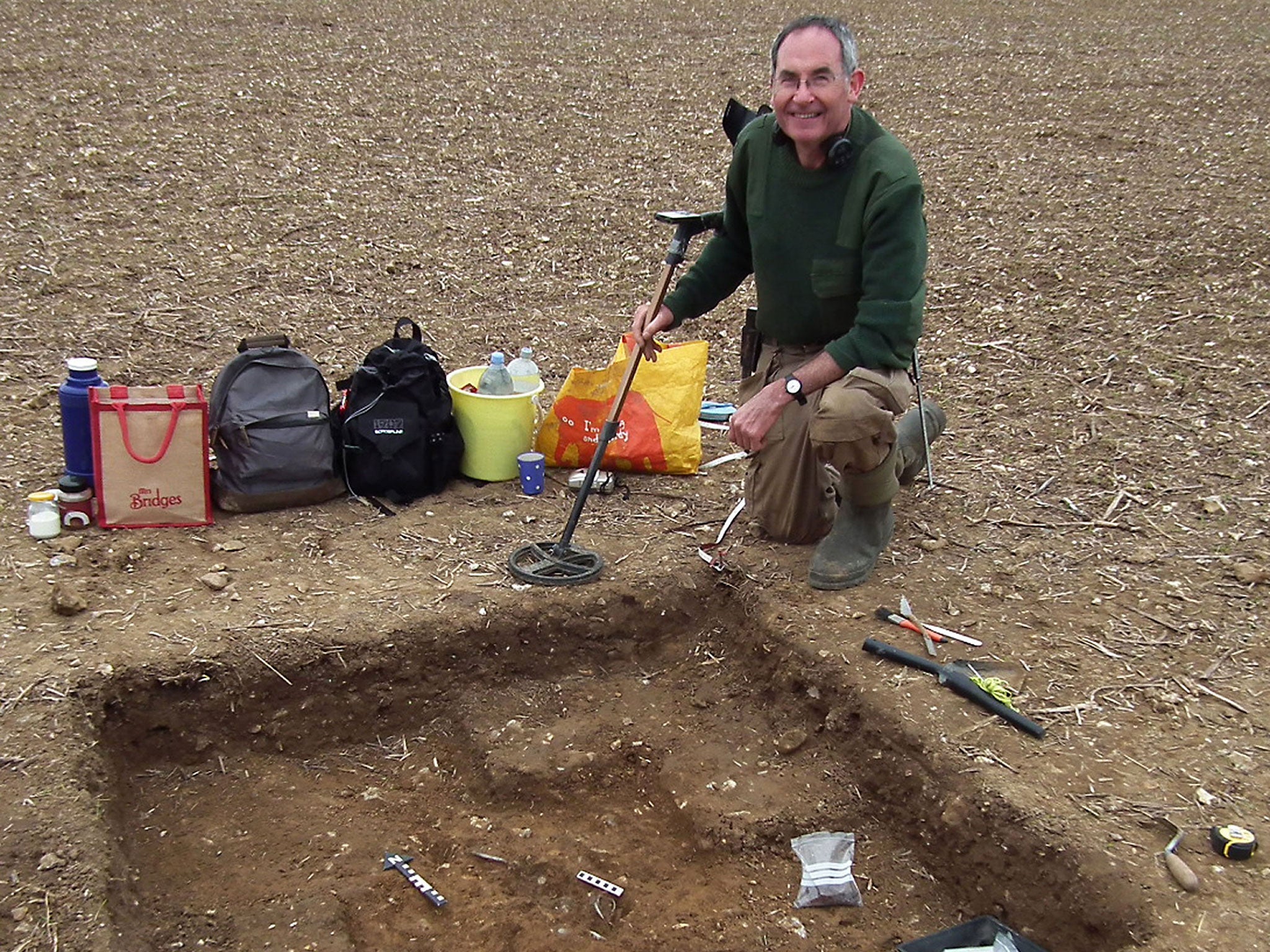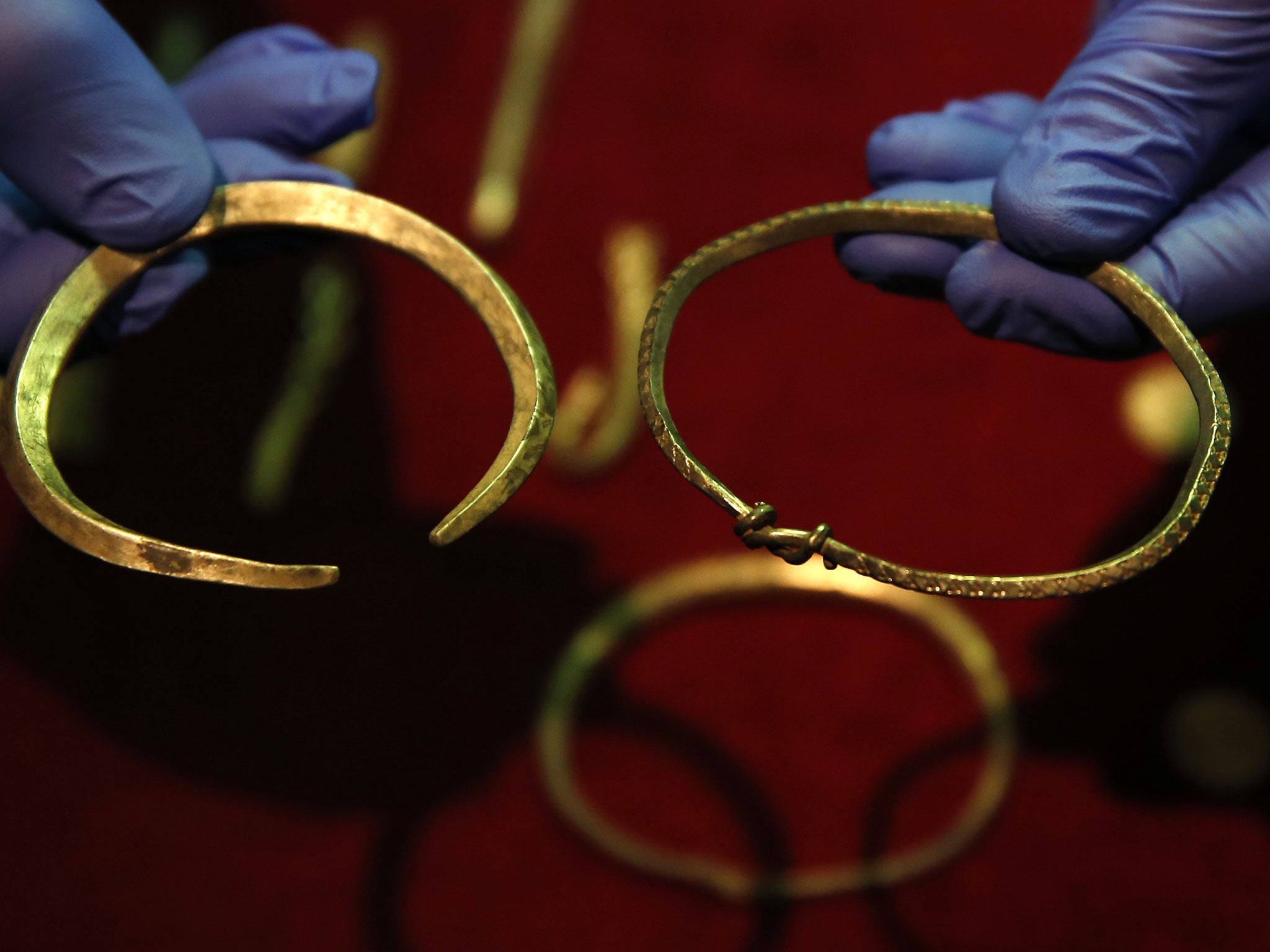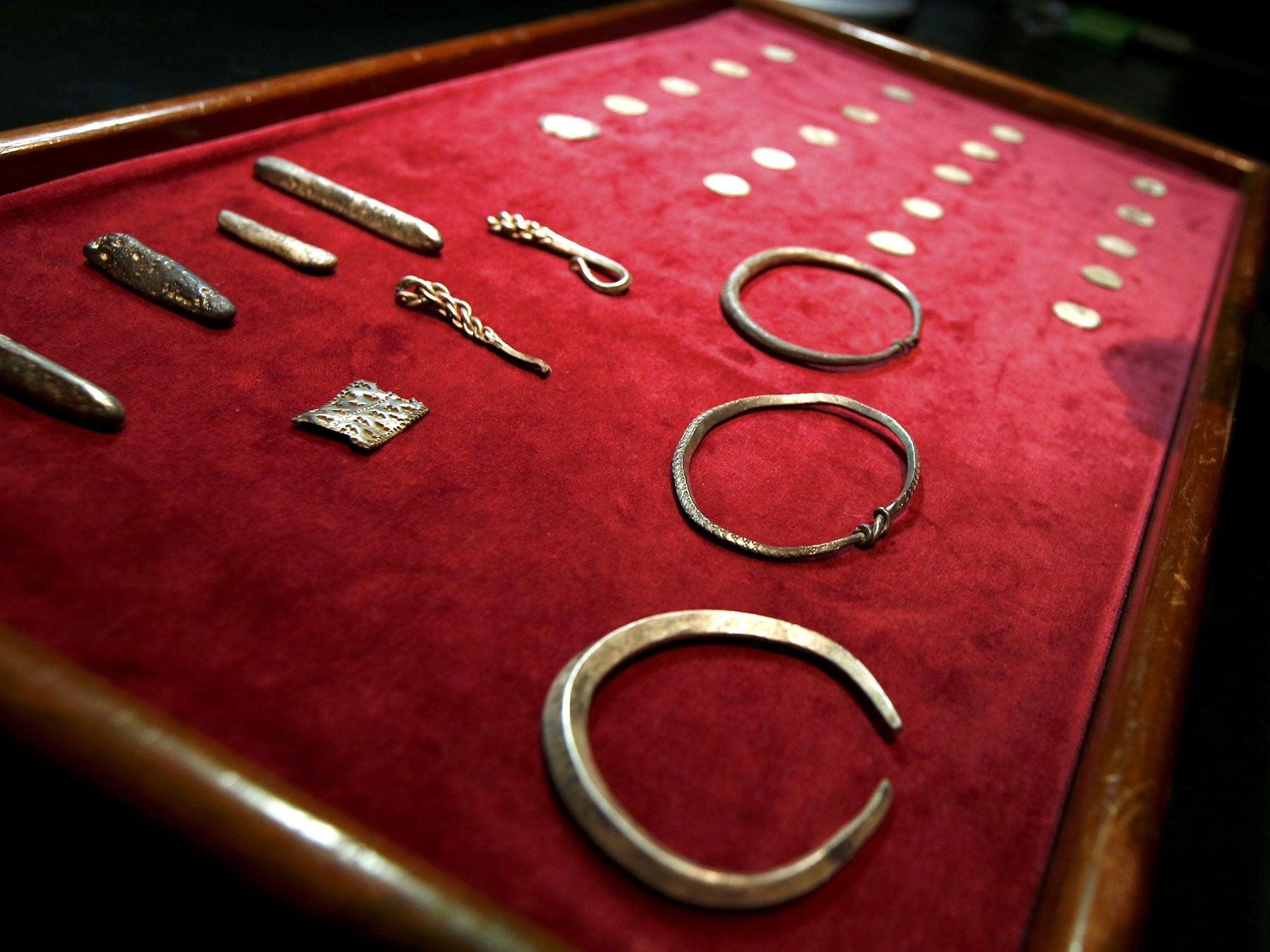Watlington Hoard: Saxon and Viking treasure from the time of Alfred the Great discovered in Oxfordshire field
James Mather, 60, unearthed the incredible find after discovering it with his metal detector

A hoard of treasure including Viking jewellery and Saxon coins has been uncovered in Oxfordshire by an amateur archaeologist with a metal detector.
James Mather, 60, was combing a field near Watlington, Oxfordshire, in October when he discovered the buried artefacts.
He found 186 coins, seven items of jewellery and 15 ingots, estimated to have been buried around the end of the 870s, during the reign of Alfred the Great.

England was in turmoil, with the Anglo-Saxon kingdoms of Wessex and Mercia fighting for survival as the Vikings’s Great Heathen Army continued their invasion.
The hoard shows the cultural clash of the time, featuring coins displaying the name of Ceolwulf II, the last king of Mercia, alongside Viking arm rings and bracelets.
The period has recently been dramatised in The Last Kingdom, a BBC adaptation of Bernard Cornwell’s novels.
The conflict eventually led to the unification of England, with King Alfred of Wessex defeating the Vikings and forcing them to retreat north of the Thames and into East Anglia.

Historians believe the Watlington Hoard was buried during that migration, perhaps after being abandoned and buried by a traveller on the nearby Icknield Way, an ancient route through the Chilterns from East Anglia to Wiltshire and Dorset.
The collection was taken to the British Museum, where it was excavated, cleaned and will be studied by experts.
Gareth Williams, curator of early medieval coinage at the British Museum, said it dated from a vital time in British history.
“This hoard has the potential to provide important new information on relations between Mercia and Wessex at the beginning of that process,” he added.

Mr Mather said that his incredible find shows what can be achieved by members of the public.
”Discovering this exceptional hoard highlights how responsible metal detecting, supportive landowners and the Portable Antiquities Scheme (PAS) contribute to national archaeological heritage,” he added/
“I hope these amazing artefacts can be displayed by a local museum to be enjoyed by generations to come.”
Since 1997, a million discoveries have been unearthed by the public, who must report anything classed as treasure under a 1996 law.
Ed Vaizey, the culture minister, said: “Sharing these archaeological treasures with the country means protecting them for future generations to learn more about our nation's rich and complex past.”
Additional reporting by PA
Join our commenting forum
Join thought-provoking conversations, follow other Independent readers and see their replies
Comments
Bookmark popover
Removed from bookmarks